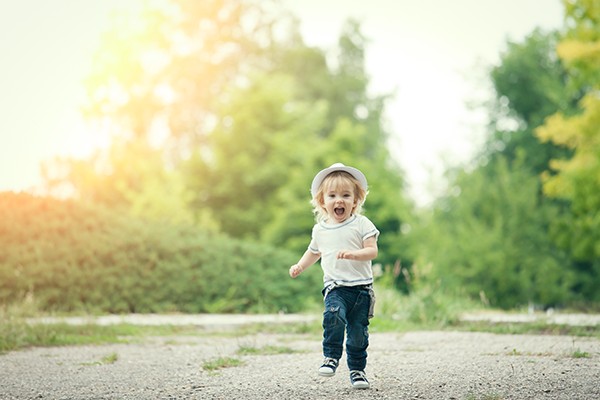Understanding your three-year-old’s development is an exciting journey. At this age, children are rapidly acquiring new skills and knowledge. This article will guide you through the key developmental milestones for three-year-olds, addressing common questions like “What Should Three Year Olds Be Learning?” and offering practical tips to support their growth. We’ll cover physical, cognitive, language, and social-emotional development, providing a comprehensive overview of what to expect at this age.
Physical Development: Growing and Moving
Three-year-olds are bundles of energy, constantly exploring their physical capabilities. While growth slows down compared to the first year, expect a weight gain of 4-6 pounds and a height increase of 2-3 inches per year. Keep in mind that growth rates vary among children.
Typical physical milestones for three-year-olds include:
- Gross Motor Skills: Running, jumping, walking upstairs without assistance, riding a tricycle.
- Fine Motor Skills: Washing and drying hands, stacking blocks, drawing straight lines and copying circles, using a spoon proficiently, dressing and undressing (except for buttons and laces).
Cognitive Development: Exploring and Understanding
Three-year-olds are curious learners, eager to understand the world around them. Their cognitive abilities are rapidly expanding. You’ll notice significant progress in:
- Problem-Solving: Attempting to solve simple problems and remembering events.
- Understanding Concepts: Grasping size differences (big/little), past tense (yesterday), prepositions (on/under/behind), and counting up to four objects (by age four).
- Concentration: Focusing on tasks for eight to nine minutes.
Language Development: Talking and Communicating
By age three, children’s language skills are blossoming. While individual progress varies, expect your three-year-old to:
- Vocabulary: Have a vocabulary of 500-900 words (between ages 3 and 4).
- Sentence Structure: Speak in two to three-word sentences, progressing to four to five words.
- Communication: Be understood by others, use “please” and “thank you,” refer to themselves by name, and name colors. They can also remember simple rhymes and lyrics.
Social-Emotional Development: Interacting and Relating
Three-year-olds are learning to navigate social situations and manage their emotions. Common social-emotional milestones include:
- Social Interaction: Sharing toys, playing with other children, taking turns.
- Emotional Regulation: Experiencing fewer temper tantrums and expressing feelings in more socially acceptable ways.
- Imagination and Play: Engaging in pretend play, often with imaginary friends. Acknowledge their fears and offer comfort and reassurance.
Promoting Learning and Development: Activities for Three-Year-Olds
Actively engaging your three-year-old in various activities can significantly contribute to their development. Here are some ideas:
- Physical Activity: Encourage at least 30 minutes of structured (adult-led) physical activity and 60 minutes of unstructured play daily. Limit inactivity to no more than one hour at a time (except for sleep). Try activities like walking, running, playing at the park, or dancing to music.
- Learning Activities: Engage in activities that stimulate cognitive and language development, such as reading together, singing songs, playing with puzzles, drawing, and engaging in pretend play. Encourage them to help with simple chores and talk about their day.
Sleep for Three-Year-Olds
A 3-year-old needs 11-13 hours of sleep per day. While naps may be phased out at this age, establish a consistent bedtime routine. Limit screen time, caffeine, and sugar before bed.
Conclusion
Understanding the typical developmental milestones for three-year-olds empowers parents and caregivers to provide the appropriate support and encouragement. Remember that every child develops at their own pace, and these milestones serve as guidelines. Consult your pediatrician with any concerns about your child’s development. By nurturing their physical, cognitive, language, and social-emotional growth, you can help your three-year-old thrive and reach their full potential.
Reviewed by Dr. Toya Tillis, Pomona Pediatrics, CHOC Primary Care – June 2021

